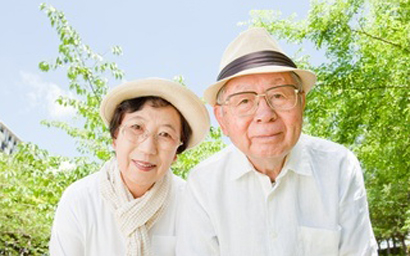The problems being created in Europe by an ageing society are well documented. Could the solution to the problem be found in the world’s oldest society of Japan?
An article entitled ‘Aging gracefully: What the West can learn from Japan’, released last week by Schroders, suggests that there are many lessons to be learnt from the way Japan, which has a median age of 44.7 years, about 5 years higher than the developed country average, and more than 15 years higher than the global average, has handled its demographic crisis. The first is: act early.
“The key point is that Japan recognised its ageing problem early, and took steps to reform both the health and pension systems to contain age-related spending,” say the article’s authors, Virginie Maisonneuve and Katherine Davidson.
The healthcare system has been carefully redesigned to prevent over-use and disproportionate use of high-cost services. As a result, Japan spends just 8.1% of its GDP on healthcare compared with 16% in the USA and an OECD average of 8.9%.
Reform of the pension system has also focussed on cost containment. Measures taken since the 1980s include relatively low replacement rates, raising the pensionable age from 60 to 65 and indexing pensions to prices rather than earnings. Furthermore, in a highly far-sighted move, Japan has taken advantage of the ‘demographic dividend’ that has existed for much of the past 50 years, when there was a large working age population with a small number of dependents, by setting pension contribution rates higher than necessary for contemporary needs and using the surplus to create a reserve fund. The fund’s value now stands at $1.2 trillion.
A key factor in Japan’s graceful ageing process is older people’s willingness to continue working and Japanese companies’ willingness – to some extent driven by legislation – to employ. There are lessons here for western companies, but also dangers.
“There has been very little written on how to manage older workers, and an aging workforce can lead to spiralling wage bills if salaries are driven by seniority,” say Maisonneuve and Davidson. “As legal and effective retirement age increases, Western companies will need to become more cognizant of the costs and benefits of older workers.”
An ageing population and workforce also require companies to rethink their marketing. In Japan, companies are employing marketing managers to focus on silver consumers, and niche companies have sprung up offering such delights as robot pets, indoor vegetable gardens and multi-coloured incontinence pads.
The central lesson for investors, say Maisonneuve and Davidson, is that they need to recognise well in advance the markets, industries and companies that are best-placed to meet the demographic challenge. “Demographic change will alter the competitive landscape for each and every company worldwide. Investors must be able to identify the ones that will adapt, survive, and thrive.”
At the same time, there is only so much reform can achieve. A dramatically ageing population will hamper economic growth, and so it is that Japan’s latest play is to try and raise its birth rate by offering a ¥26,000 monthly childcare allowance and free schools
Fiona Rintoul, Editorial Director
©2010 funds europe





